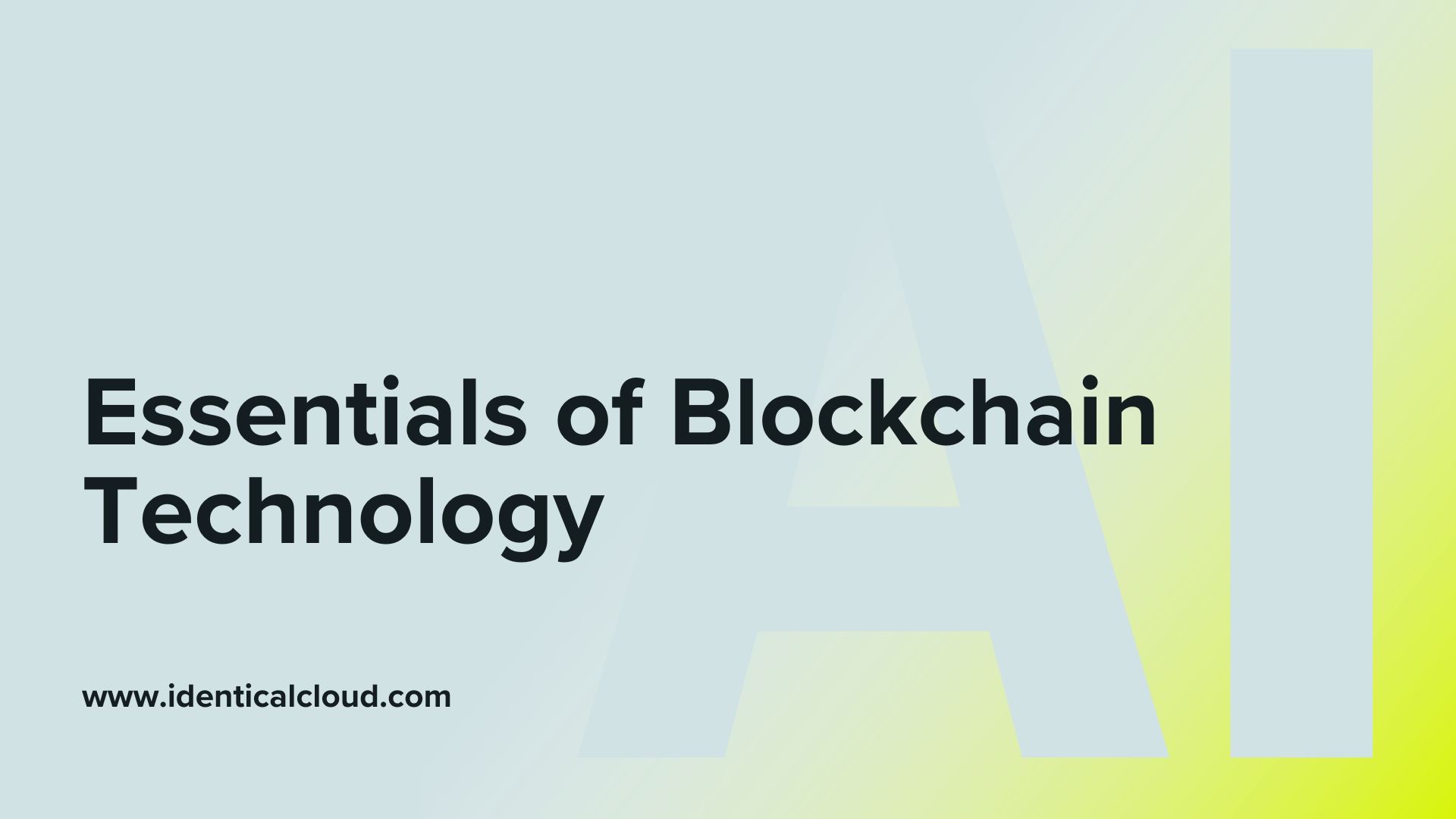
Essentials of Blockchain Technology
Essentials of Blockchain Technology
In today’s digitally driven landscape, the disruptive potential of blockchain technology resonates across various sectors, promising a paradigm shift in how we perceive data security, transparency, and trust. Beyond its association with cryptocurrencies like Bitcoin, blockchain serves as the backbone of numerous innovative applications, reshaping industries and redefining transactional frameworks.
Understanding Blockchain Technology
At its essence, blockchain serves as a decentralized, distributed ledger system that records transactions across a network of computers. Unlike traditional databases held by a central authority, blockchain operates on a peer-to-peer network, where each transaction is stored within a block. These blocks are then linked together in a chronological chain, creating a secure and transparent record of transactions.
The Essence of Decentralization and Security
Decentralization lies at the heart of blockchain’s strength. Instead of relying on a single entity to manage transactions, the network of nodes collectively maintains the ledger. This lack of a central point of control makes it highly resilient to hacking and manipulation. Additionally, the use of cryptographic techniques ensures the integrity and security of data stored within blocks.
Establishing Trust through Consensus Mechanisms
Consensus mechanisms play a pivotal role in establishing trust within a blockchain network. Various models such as Proof of Work (PoW), Proof of Stake (PoS), Proof of Authority (PoA), and Delegated Proof of Stake (DPoS) dictate how nodes reach consensus on validating transactions. These mechanisms ensure the authenticity of transactions, effectively preventing fraudulent activities.
Essential Features and Key Components
- Immutability: Once recorded, data stored on the blockchain cannot be altered or deleted, ensuring a permanent and tamper-proof ledger.
- Smart Contracts: These self-executing contracts are programmable agreements that automate actions when predefined conditions are met. Smart contracts eliminate intermediaries, enhance efficiency, and open new vistas of automation.
- Public and Private Keys: Each participant possesses a unique cryptographic identity, with a public address allowing them to receive funds or data and a private key enabling secure access to their assets or information.
Exploring the Expansive Applications
Beyond its association with cryptocurrencies, blockchain technology has a multitude of applications:
- Finance and Banking: Revolutionizing cross-border transactions, reducing costs, and expediting settlements while ensuring security and transparency.
- Supply Chain Management: Tracking and validating the journey of products, authenticating their origins, and combating counterfeiting.
- Healthcare: Securing patient records, enabling interoperability among disparate systems, and ensuring data privacy and integrity.
- Real Estate: Facilitating transparent and immutable property transactions, streamlining documentation, and enhancing property ownership verification.
Challenges and Future Prospects
Despite its immense potential, blockchain encounters hurdles like scalability, regulatory compliance, and energy consumption. However, ongoing research and innovation aim to address these challenges, paving the way for improved scalability and wider adoption across industries.
Blockchain technology stands as a testament to innovation, offering a decentralized, transparent, and secure framework that has the potential to revolutionize numerous sectors. Its ability to instill trust, foster transparency, and streamline operations continues to inspire novel applications, steering us toward a future where secure digital interactions are the norm.
As blockchain continues to evolve and mature, its impact on society, businesses, and technology will undoubtedly be profound, unlocking new possibilities and reshaping the way we perceive and conduct transactions.
